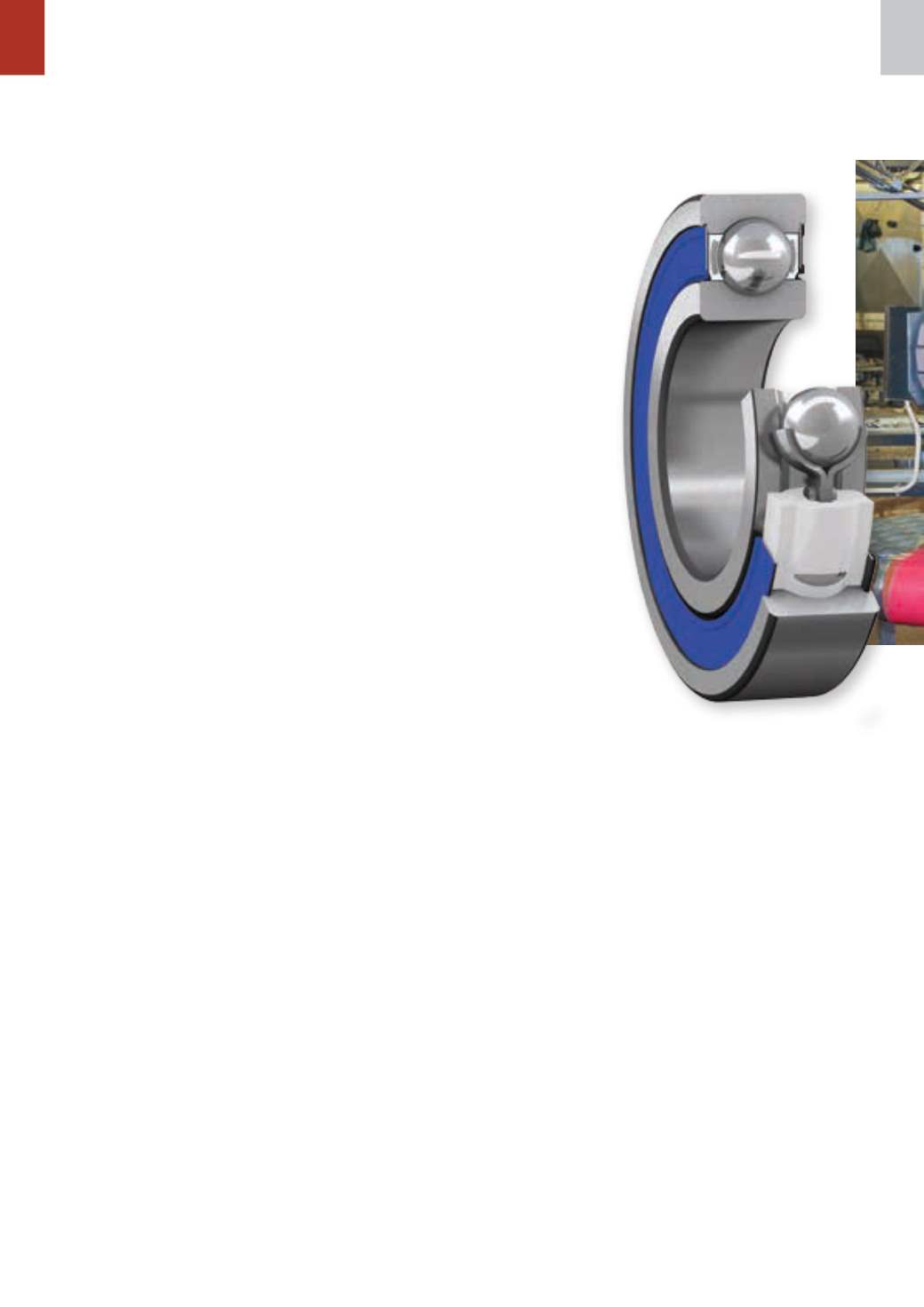

10
Mechanical Technology — May 2016
⎪
Proactive maintenance, lubrication and contamination management
⎪
T
here are many technologies
available in relation to lubricants
and lubrication that ensure the
right amount and type of lubri-
cation is applied at the right time. In the
food industry, however, the identification
of potentially negative impacts on HACCP
(hazard analysis and critical control
points) has led to the emergence of a
different approach to managing lubrica-
tion proactively.
Lubrication practices are not always
effective and costs can be daunting.
While good lubrication practices are
widely accepted to be fundamental to
plant reliability, the question is not about
re-lubricating, but about the choices
made to achieve the right outcome.
So how effective are current lubrica-
tion practices? If manually lubricating
– do people know how much, with what
and how often?
Some typical answers throughout the
industry are: ‘I re-lubricate when I feel it
is the right time’. How much? ‘It depends
on the size of the man using the grease
gun’. What with? ‘It depends on what
grease cartridge is in the stores’. In other
words, in the food and beverage industry,
re-lubrication can be still an ad-hoc activ-
ity and not scientifically applied.
Why should one be concerned? The
consequences of ineffective lubrication
can be: excessive downtime; high spares
consumption; food and operator safety
risks; and ultimately, an expensive toll on
the maintenance budget. In other words,
lubrication actions can often cause as
many problems as they solve:
• Costs:
Frequent re-lubrication in-
creases grease and labour costs and
is associated with the need to purge
grease from all bearing positions.
• Contamination risks:
over-lubricating
can often compromise Food safety.
• Operator safety:
Re-lubricating of-
ten needs to be done in hazardous
working areas with difficult access.
Additionally, leaking seals can cause
slips and trips causing high costs of
absenteeism due to injuries.
Lubrication management in the food
SKF’s new range of Food Line stainless steel
deep groove ball bearings (VP311) meets two
key requirements of the food industry: the
seals are made from synthetic rubber compli-
ant with US Food and Drug Administration
(FDA) as well as European Community (EC)
requirements and are coloured blue for opti-
cal detectability, should they be damaged;
and they use high quality grease, suitable for
food and beverage applications – registered
as NSF category H1.
“The seven most expensive words in business are ‘we have always done it this way’,” says Jan Backer,
SKF South Africa’s lubrication manager. “Lubrication management can make or break
asset performance. Get your lubrication management right and you have a sound
foundation for asset reliability. Get it wrong or manage it incorrectly and you will
be paying expensive consequences,” he adds.
• Resources and skills:
There is a skill-
level challenge the industry. People
that can re-lubricate machines cor-
rectly are in short supply and retaining
the necessary knowledge and skill
has become difficult.
The industry is sending warning
signs
Ever tightening food industry safety
regulations are demanding different
ways of managing lubrication. Very often,
lubrication management reviews are part
of HACCP certification and are checked
by third party regulators, which can be
employed by the producer or imposed on
them by their customers, often retailers.
The new Food Safety Modernisation
Act (2011) for example is designed to
prevent contamination in the food chain,
rather than define reactive procedures for
dealing with problems once they arise.
Companies certainly would not wish
to be one of those faced with a recall due
to food safety issues.
As a result of safety or health-related
recalls of food products:
• 55% of customers would switch
brands, at least temporarily.
• 16% would never purchase the prod-
uct again.
• 17% would avoid any product from
the recalled brand (Harris Poll, 2014)
Furthermore, companies are pressured
to set targets for the environment and
sustainability, which can be impacted
by the way lubrication and re-lubrication
is executed. Zero landfill is one of the
common KPIs to follow and the trend
is to change from disposal-oriented to
avoidance-focused environmental strate-
gies. (
The Zero Landfill Initiative
)
For example, it is common practice
to re-lubricate bearings after each wash
down. During this process, excess grease
is discharged past the bearing seals
(purged). This can compromise food
safety, people safety and of course asset
reliability. During the next wash down
cycle, the grease is washed away and
into the plant’s wastewater.
Lubrication as a strategy instead
of a management practice
It is now time for the food and beverage
industry to reconsider the way lubrica-
tion is practiced on sites and to look
into alternative technologies that can
simultaneously provide food and operator
safety, optimised costs and environmen-
tal benefits.
Among the dedicated technologies
available to support the management
of the lubrication of food and beverage
processing machinery, re-lubrication-free
bearings and advanced sealing systems
have emerged as potential solutions that
can mitigate against the risk of food
and operator safety, while also avoiding
excess lubricants being washed into the
















